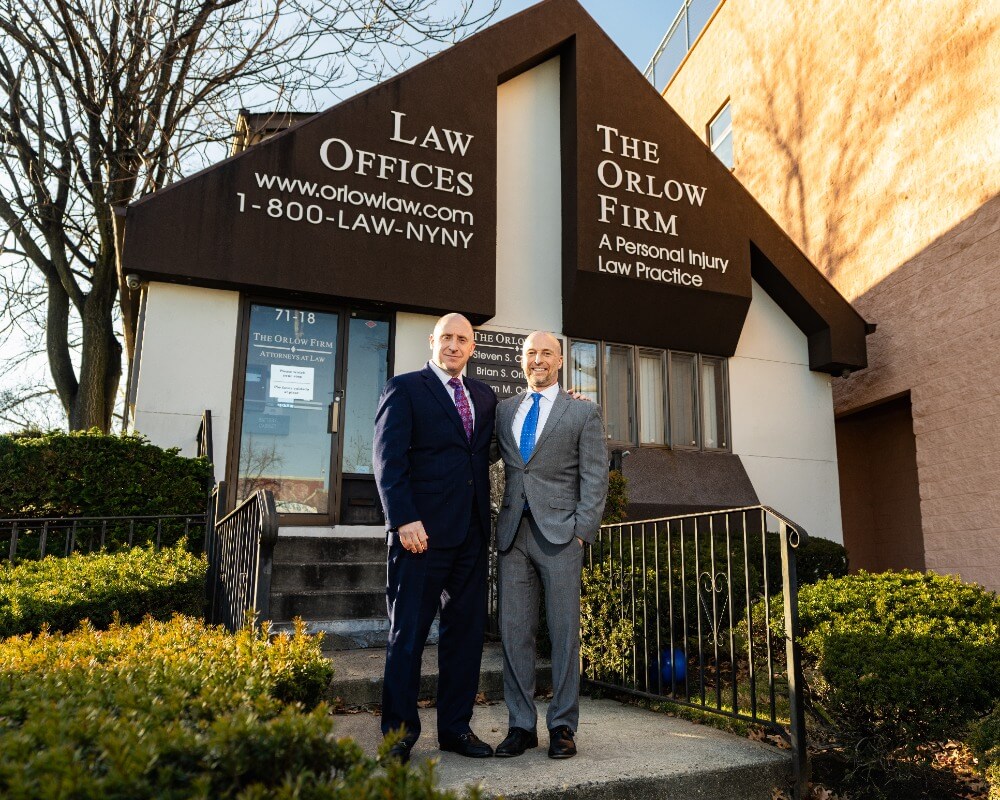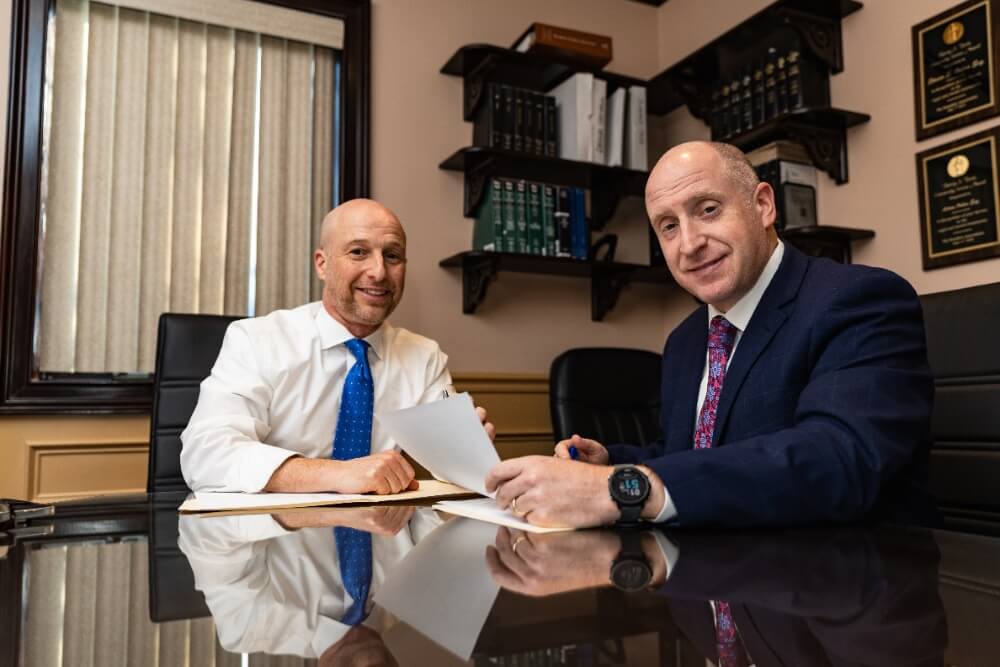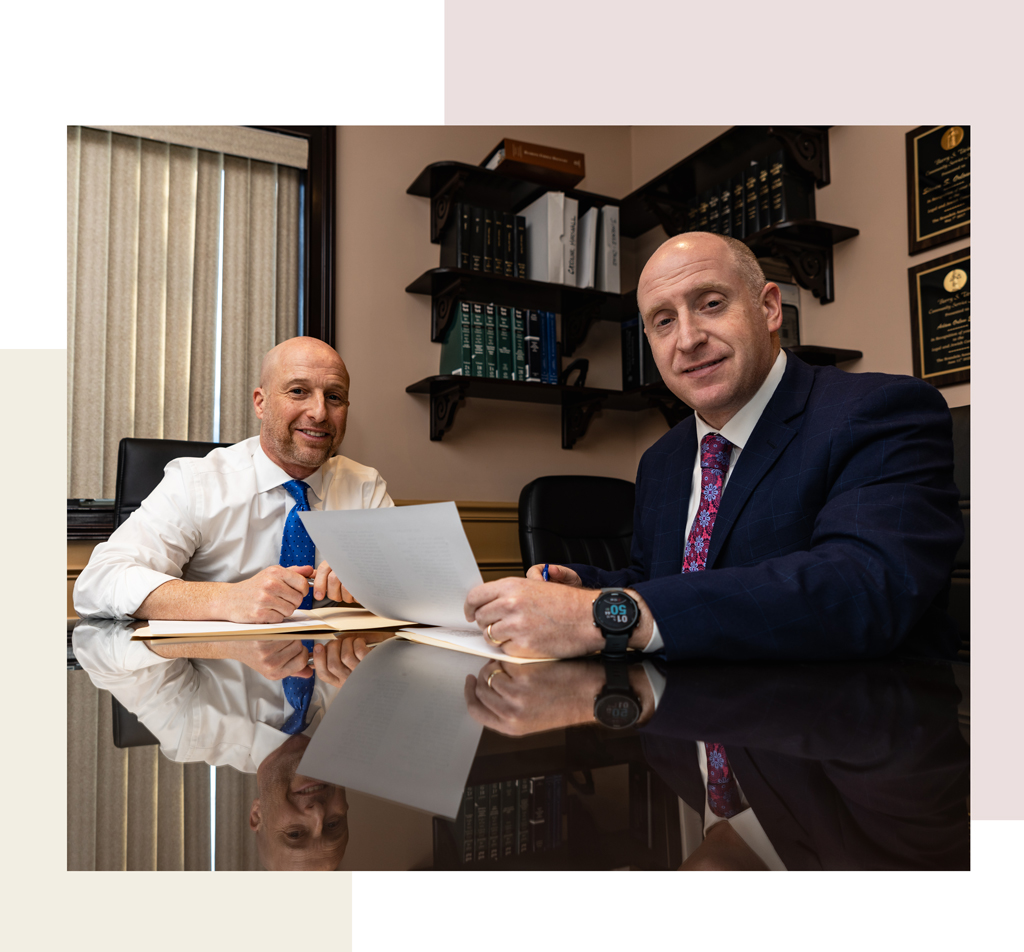The Following People Contributed to This Page
Cindy Cordova is a seasoned legal writer with over seven years of experience crafting clear, informative, and professional content for law firm websites. With a B.A. in English from Trinity Christian College, she combines her strong writing background with a deep understanding of legal topics to help firms connect with their clients through trustworthy and accessible content.
Rukshani Lye is The Orlow Firm’s IFCN-certified fact-checking and research specialist. With a master’s from Georgetown and 10+ years verifying complex data for legal, financial, and real-estate publications, she ensures every personal-injury article she reviews is accurate, up-to-date, and client-focused.
- June 4, 2025
Experienced Pedestrian Accident Lawyers in New York City

If you are looking for New York City Pedestrian Accident Lawyers, you have come to the right place. At The Orlow Firm, we understand the challenges that pedestrians face in busy urban areas. NYC traffic and crowded sidewalks can create dangerous situations. Our team is committed to protecting your rights after a pedestrian accident. We know that each case is unique and requires careful legal review and compassionate service.
We have helped many individuals in New York City secure fair compensation after a pedestrian accident. Our NYC personal injury law firm combines local knowledge with a thorough legal approach to help you recover the maximum compensation you may be entitled to. If you have been injured by a vehicle or due to unsafe conditions, please reach out. Your health and future are important.
Call us today for a free case evaluation at (646) 647-3398.
Why Choose Us for Your Pedestrian Accident Claim
When you face a pedestrian accident in New York City, having experienced legal support is crucial. Our team understands the unique challenges of NYC traffic and the risks pedestrians face each day. We are committed to protecting your rights and helping you seek the compensation you may be entitled to under New York law.
We put our local knowledge and caring approach to work for your claim. Our decades of experience in handling pedestrian accident claims in busy urban areas like Manhattan, Brooklyn, and Queens have taught us the ins and outs of local court systems and traffic regulations. We work closely with you to develop a clear strategy that fits your situation. Here are just a few reasons why clients trust us with their pedestrian accident claims:
- Local Experience: We know NYC’s streets and busy intersections, and we use this insight to strengthen your case.
- Proven Results: We have a strong record of handling pedestrian accident claims and have helped many clients receive fair compensation.
- Compassionate Guidance: We treat each client with respect and understanding during a difficult time.
- No Upfront Costs: You owe nothing until we secure compensation, so you can focus on your recovery.
If you have been injured in a pedestrian accident, you deserve a dedicated legal partner who understands the local risks and legal standards. Contact us today for a free consultation to discuss your claim and learn how we can help. Call now at (646) 647-3398.
Common Causes of Pedestrian Accident Cases We Handle
When you’re injured as a pedestrian in New York City, it’s crucial to have a legal team that understands the city’s complex traffic patterns, crowded streets, and unique infrastructure challenges. Pedestrian accidents often happen due to a combination of factors — from poorly maintained sidewalks, busy intersections and distracted or reckless drivers to pedestrians themselves at fault.
At The Orlow Firm, our decades of experience handling pedestrian accident cases across all five boroughs have given us the insight to identify the true causes behind these incidents. Understanding those causes is essential to building a strong legal case on your behalf. Here are some of the main types of cases we handle:
- Reckless or Unlawful Driving: Situations involving speeding, failure to yield, or ignoring traffic signals that put pedestrians at serious risk.
- Negligence: Includes driver distraction, impaired driving due to alcohol or drugs, and other failures to exercise due care.
- Hit and Run Accidents: Cases where a driver flees the scene without providing assistance or identifying themselves.
- Vehicular Collisions: Incidents where a moving vehicle strikes a pedestrian, often resulting in serious or life-threatening injuries.
- Intersection Accidents: Collisions occurring at busy crosswalks or intersections, often due to driver inattention or confusion over right-of-way.
- Sidewalk Accidents: Cases where pedestrians are injured by dangerous sidewalk conditions such as broken pavement, debris, or poor maintenance.
- Pedestrian-Caused Accidents: While drivers are often at fault, pedestrians are also responsible for following traffic laws. In certain cases, a pedestrian may be considered negligent or partially at fault for an accident. Such instances include:
- Crossing outside of marked crosswalks or Jaywalking
- Ignoring traffic signals
- Entering the roadway suddenly without giving vehicles a chance to stop
- Walking under the influence
- Walking while distracted by a phone or headphones
Even if a pedestrian is partially responsible for an accident, they may still be eligible to recover compensation under New York’s comparative negligence law, though the amount may be reduced based on their share of fault. Our team is dedicated to uncovering the facts, proving liability, and holding negligent parties accountable. If you have suffered injuries in any pedestrian accident, contact The Orlow Firm today for a free consultation at (646) 647-3398.
Proven Results for Injured People
At The Orlow Firm, our extensive experience in personal injury cases stands as a testament to our dedication and skill. While our track record spans many types of claims, our approach in handling pedestrian accident cases is driven by the same commitment to securing fair and substantial compensation. Below are some examples of our success in personal injury cases across New York City:
- $997,997: for a driver whose taxi was hit head on by a truck. He injured his back which required surgery.
- $750,000: for a maintenance worker who was a passenger in a work vehicle that was involved in an accident with another truck. He required surgery to his neck and surgery to a pre-existing back injury.
- $675,000: Client was rear-ended by a tractor trailer. He required arthroscopic surgery for both shoulders.
- $650,000: for a passenger on a motorcycle that was struck by a police car. She suffered multiple injuries, including a fractured jaw that required surgery.
Prior results do not guarantee a similar outcome.
Our results reflect our strong representation and the aggressive advocacy we bring to every case. Every injury claim is unique, and our goal is to seek full and fair compensation for our clients. If you are a pedestrian injured in New York City, let our proven track record work for you. Call us today for a free consultation at (646) 647-3398.
New York Laws and Regulations Affecting Pedestrian Accident Claims
New York laws play a key role in pedestrian accident claims. These laws create clear rules to protect pedestrians on busy city streets. They set standards for drivers and pedestrians, ensuring safe travel along New York City roads. Regulations such as the New York General Municipal Law and Vehicle and Traffic Law influence how accidents are handled in court. Local ordinances and case law also affect the rules in each borough.
Understanding these laws is critical to building a strong pedestrian accident claim. Many cases hinge on whether a driver failed to yield at a marked crosswalk or ignored traffic signals. Even if a pedestrian did not perfectly follow every rule, New York’s comparative negligence system may still allow recovery for injuries. Laws also provide that drivers must remain vigilant in heavy NYC traffic and at busy intersections.
Below are some key legal points affecting pedestrian accident claims:
- Right-of-Way Laws: Under Vehicle & Traffic Law § 1151(a), drivers must yield to pedestrians in crosswalks when no traffic-control signal is operating.
- Traffic-Signal Compliance: VTL § 1110 and § 1111 require drivers and pedestrians to obey official traffic-control devices and signal indications.
- Comparative Negligence: New York follows a pure comparative-fault rule—injured pedestrians may recover damages reduced by their percentage of fault (CPLR § 1411).
- Pedestrian at Traffic Control Signals: Under VTL §1112 & §1152, pedestrians must follow signals like “WALK” or “DON’T WALK” and yield when crossing at any point not marked as a crosswalk.
- Pedestrians Use of Sidewalks: Under VTL §1156(a) pedestrians are also required to use Sidewalks When Available as per VTL §1156(a)
These points are examples of how New York laws influence your pedestrian accident claim. Local court decisions and the NYC municipal code add further layers of protection for pedestrians. Being aware of these regulations helps you understand the strengths and challenges of your case.
If you have questions about how these laws apply to your injury, please call us for a free consultation at (646) 647-3398. We are here to help you navigate the legal process and work toward a fair outcome.
Common Injuries in Pedestrian Accident Cases
Common injuries from pedestrian accidents can vary widely. In New York City, these injuries often require extensive medical attention and long-term care. When you are injured as a pedestrian, you may face severe physical challenges along with emotional distress. Here are some common injuries seen in pedestrian accident cases:
- Traumatic Brain Injuries: Injuries such as concussions or more severe brain trauma that can lead to long-term cognitive and physical impairments.
- Fractured or Broken Bones: Fractures to the arms, legs, or ribs are common when pedestrians are struck by a vehicle.
- Spinal and Back Injuries: Damage to the spinal cord or vertebrae can result in chronic pain or even paralysis.
- Soft Tissue Injuries: Injuries to muscles, ligaments, and tendons that may require prolonged physical therapy.
- Internal Injuries: Damage to organs or internal bleeding that can be life-threatening and require urgent medical care.
- Psychological Trauma: Emotional distress, anxiety, and PTSD can occur after a traumatic accident.
These injuries can affect every aspect of your life, from your physical mobility to your ability to work and enjoy time with your family. Each case is unique, and our dedicated team works to ensure that you receive the full range of compensation you need for recovery. If you or a loved one has suffered injuries in a pedestrian accident, contact us right away for a free consultation at (646) 647-3398.
Steps to Take After a Pedestrian Accident in New York City
If you are involved in a pedestrian accident in New York City, taking immediate and responsible action can help protect your legal rights and strengthen your case. Follow these guidelines as soon as possible after the incident:
- Seek Medical Attention: Even if you feel fine, visit a local emergency room or urgent care center immediately. Some injuries may not be visible right away.
- Call Authorities: Report the accident to the NYPD. A police report is important for documenting the details of the incident.
- Document the Scene: Take photos and videos of the accident area, any traffic signals or signs, and any visible injuries. This evidence is vital for your case.
- Gather Witness Information: Collect names and phone numbers of anyone who saw the accident. Witness statements can support your claim later.
- Exchange Information: Secure the contact and insurance details of the drivers or parties involved. Do not admit fault at the scene.
- Keep Records: Save copies of medical reports, receipts, and any other expenses related to the accident. These records will be essential for compensation claims.
- Avoid Social Media Posts: Do not share details or photos of the accident on social media. Public posts can be used against you later.
- Contact a Pedestrian Accident Lawyer: Speak with a personal injury attorney familiar with NYC traffic and local laws to protect your rights and help guide you through the claims process.
Following these steps can help safeguard your interests and build a strong case for the compensation you may deserve after a pedestrian accident. If you have any questions or need legal advice, please contact our firm for a free consultation at (646) 647-3398.
Establishing Liability in Pedestrian Accident Cases
Determining fault in pedestrian accidents in New York City can be complex. Liability may rest with a driver, a government entity, or even both. Each case depends on its own facts and evidence. Investigators often review the accident scene, traffic signals, and roadway conditions to establish liability.
In many cases, liability is established by showing that one or more parties acted negligently. This can include factors such as:
- Driver Negligence: Evidence that a driver was speeding, distracted, or failed to yield to pedestrians.
- Pedestrian Errancy: Situations where a pedestrian did not use a marked crosswalk or ignored traffic signals. Comparative negligence may be considered under New York law.
- Roadway Conditions: Poor lighting, malfunctioning signals, or inadequate crosswalk markings that contribute to accidents.
- Government Liability: In some cases, government entities may be held responsible for failing to maintain safe road conditions or proper signage.
Investigators gather evidence from traffic camera footage, witness statements, and accident reports to determine which party acted negligently. Legal professionals then use this evidence to build a strong pedestrian accident claim. Our New York City pedestrian accident lawyers work hard to pinpoint all responsible parties.
If you have been injured in a pedestrian accident, please contact our office for a free consultation and free case evaluation. Let us help you navigate your claim and seek the compensation you may be entitled to under New York law. Call us today at (646) 647-3398 to discuss your case.
Damages You Can Recover
When you suffer a pedestrian accident in New York City, you may be able to recover several types of damages. These financial awards help cover both immediate and future needs. It is important to understand your rights under New York law. Below is a list of common damages that you might recover in a personal injury claim:
- Medical Expenses: Costs of emergency care, hospital stays, surgeries, medication, and rehabilitation services.
- Lost Wages: Compensation for income lost during your recovery and any future earnings that are reduced due to your injuries.
- Pain and Suffering: Awards for the physical pain and emotional distress caused by your accident.
- Property Damage: Reimbursement for damage to personal property, such as clothing or devices, that was directly affected by the accident.
- Future Medical Treatment: Coverage for ongoing care such as physical therapy, long-term care, or assistive devices.
- Emotional Distress: Damages for the anxiety, depression, or trauma that can arise from the accident.
- Loss of Enjoyment of Life: Compensation for the impact your injuries may have on your ability to enjoy everyday activities and hobbies.
Understanding the full scope of recoverable damages is a key part of your pedestrian accident claim. If you have been injured in an accident, it is vital to speak with a trusted New York City personal injury attorney. Contact our firm for a free case evaluation to discuss your potential recovery and next steps. Take the first step toward justice by calling us today at (646) 647-3398.
How We Maximize Compensation for Pedestrian Accident Victims
We work tirelessly to seek the full amount of compensation permitted by law for each client. Our team understands New York City’s unique traffic dynamics and legal challenges when it comes to pedestrian accidents. We use a clear process that starts with gathering all the facts. We then build a strong claim by proving fault and all related damages.
To achieve maximum compensation, we focus on several key steps:
- Investigation: We gather critical evidence, review traffic camera footage, and collect eyewitness statements to build a solid case.
- Medical Evaluation: Our team works with trusted medical professionals to document injuries and future treatment needs.
- Damage Calculation: We carefully account for lost wages, medical expenses, pain and suffering, and other losses while considering the full impact of the accident.
- Negotiation and Litigation: We negotiate with insurance companies and are prepared to take your case to court if necessary to ensure fair compensation.
Our experienced pedestrian accident lawyers know how to navigate New York City’s complex legal system and negotiate with tough insurance carriers. We are dedicated to fighting to secure the full and fair compensation permitted by law. Contact us today for a free consultation at (646) 647-3398 to discuss your case and begin the recovery process.
Statute of Limitations and Deadlines in New York
Statute of limitations set strict deadlines for filing a pedestrian accident claim in New York. In most New York personal-injury negligence cases, you have three years from the accident date to start a lawsuit (CPLR § 214(5)). This time frame is crucial, as failing to file on time may bar your claim entirely. For claims against most New York municipal entities, you must serve a Notice of Claim within 90 days (GML § 50-e) and commence suit within 1 year + 90 days (GML § 50-i). It is important to note that in most pedestrian accident cases, the clock starts ticking from the date of the accident.
Understanding and meeting these deadlines is key to protecting your legal rights. Acting quickly can help preserve vital evidence, witness statements, and medical records that support your claim. Our New York City pedestrian accident lawyers are here to guide you through this time-sensitive process and ensure that you do not miss any critical deadlines.
If you have been injured in a pedestrian accident, do not wait to act. Contact us today for a free case evaluation and let us help you understand your rights and options. Call now for a free consultation at (646) 647-3398.
Local Resources in New York City
Below are some key local resources for New York City pedestrians:
- NYC Department of Transportation: Provides information on sidewalks, crosswalk signals, and road safety guidelines. Check local regulations and updates: Visit Website.
- NYPD: Offers immediate assistance and detailed incident reports from local precincts. For more information and support: Visit Website.
- New York City Health + Hospitals: A network of public hospitals that delivers emergency care and follow-up treatment. To learn more: Visit Website.
- MTA Information: Provides public transit updates, route information, and schedules in case your commute is affected. Visit Website for current details.
- New York State Unified Court System: Offers access to legal resources, forms, and court locations essential for personal injury cases. To learn more: Visit Website.
These resources can help you navigate the aftermath of a pedestrian accident in New York City. Stay informed, seek prompt medical care, and ensure all your legal rights are protected. Contact our office today for a free consultation or free case evaluation. Call us at (646) 647-3398.
Frequently Asked Questions
If you have been involved in a pedestrian accident in New York City, you may have several questions about your legal rights and the claims process. Below are some common questions and answers to help guide you through this challenging time.
- How soon must I file a claim? In New York, you typically have three years from the date of your accident to file a lawsuit. Cases against government entities or involving specific circumstances may have shorter deadlines.
- What if I was partly at fault? New York follows a comparative negligence rule. This means you can recover damages even if you share some fault, though your compensation might be reduced based on your degree of responsibility.
- Can I recover compensation for my injuries? Yes, you may be entitled to compensation for medical bills, lost wages, pain and suffering, and other damages related to your pedestrian accident.
- Do I need a lawyer? While you can file a claim on your own, having legal guidance can help you navigate complex negotiations with insurance companies and ensure all your damages are considered.
- What type of evidence is needed? It is important to gather relevant evidence such as medical records, accident reports, witness statements, and any available photographs or video footage of the accident scene.
- Will my case go to trial? Many pedestrian accident cases settle before trial. However, if a fair settlement cannot be reached, your case may proceed to trial.
We hope these answers help clarify some of your concerns. If you have further questions or need assistance with your pedestrian accident claim in New York City, please contact our firm for a free case evaluation. Call us today at (646) 647-3398.
Contact Us for a Free Consultation
If you have been injured in a pedestrian accident in New York City, help is available. You are entitled to have your voice heard and your rights protected. Our firm is ready to review your situation and explain your legal options. We understand the challenges that come with navigating NYC traffic and busy streets. Our dedicated team is here to support you through every step of your case.
We offer a free consultation to discuss your case and help you understand how our experienced personal injury attorneys can support your efforts to recover compensation. When you call, you are taking the first step toward a fair resolution and a more secure future.
Contact us today for a free case evaluation. Your initial consultation is free and comes with no obligation. Reach out now at (646) 647-3398 to start building your case and to get the support you need.
The Following People Contributed to This Page
Cindy Cordova is a seasoned legal writer with over seven years of experience crafting clear, informative, and professional content for law firm websites. With a B.A. in English from Trinity Christian College, she combines her strong writing background with a deep understanding of legal topics to help firms connect with their clients through trustworthy and accessible content.
Rukshani Lye is The Orlow Firm’s IFCN-certified fact-checking and research specialist. With a master’s from Georgetown and 10+ years verifying complex data for legal, financial, and real-estate publications, she ensures every personal-injury article she reviews is accurate, up-to-date, and client-focused.












